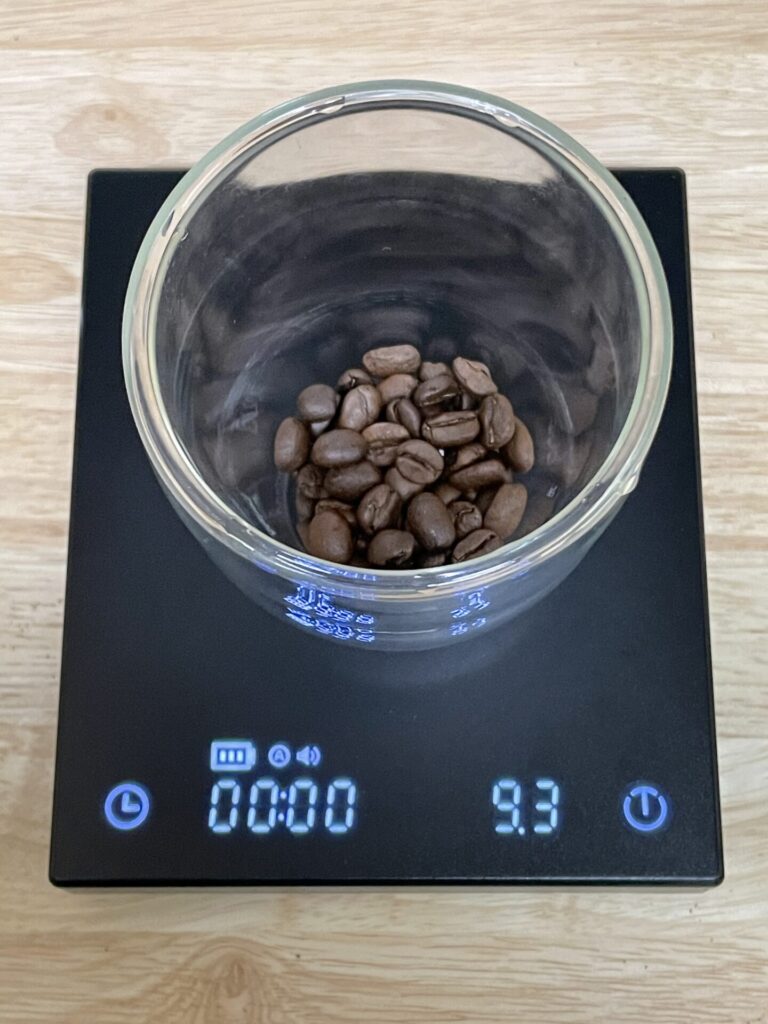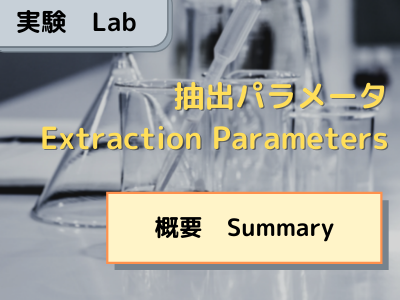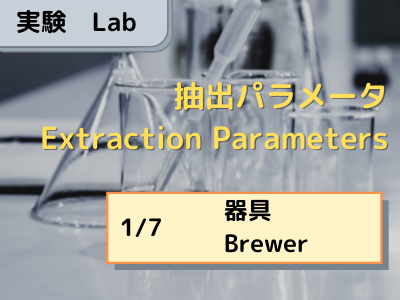Hi everyone!
In this second post of the coffee extraction parameter series, we will look in to ratios. Please check this series summary page as well.
Parameter Basics
Ratio refers to the amount of coffee grounds you use with respect to some amount of water. It is sometimes referred to as dose, although this usually is talking about the absolute amount rather than the ratio. It may be quite obvious but the higher the ratio (more coffee grounds), the more concentrated the coffee.
Use weight, not volume
One key thing to note is how you measure the amount of coffee. Please use weight, grams, as the measure.
Some of you may be wondering, is there any other way to measure the amount? Well there is and it is by volume. You may get a measuring spoon when you purchase a dripper. They some times tell you to add a certain amount of water to 1 spoon of coffee.
The reason we need to use weight and not volume is to improve repeatability.
When using volumetric measurements, the shape of the bean becomes an issue. 1 scoop of beans is far less coffee than the same scoop of ground coffee. And because of the shape and size of coffee beans, a scoop of beans is kind of nonsense. How do you get it level? Can you replicate the same scoop?
If we use weight as a measure, the size and shape of the beans do not matter. Xg of beans will be Xg even after it is ground. (assuming no retention) Also weight can be measured numerically using a scale. This allows for far easer and finer tuning of your ratio. Just imagine fine tuning your ratio as 2.3 spoons…. nightmare.

So a scale is a crucial item in your coffee brewing kit.
As a beginner, you may be using a scale that you already had at home. This is fine, and is far better than using a spoon. However I highly recommend that you get a coffee scale eventually. Coffee scales usually have 2 key features. It can measure weight with a resolution of 0.1g. And it has a timer built in. The timer you can just use your phone, so is nice to have but not critical. The 0.1g resolution is very important.
The typical amount of coffee you use for a cup is in the range of 10g. If you had a scale which only measures 1g resolution, the max error you have will be 1g. In other words, 9.5g ~ 10.4g will all show as 10g. This is a 10% error rate, and in terms of repeatability this is too big. With a 0.1g resolution scale the error is reduced to 1%. This will be key to allow you to make adjustments to ratios and make this adjustment repeatable.
Aspects to consider
One aspect to consider when adjusting the ratio is that not all soluble material in the coffee are equally extractable. Some material types are more difficult to extract than others. If you have a high ratio, you can imagine that easily soluble material will dominate your coffee, leaving no space for the less soluble ones. You need to keep in mind that easily soluble materials might not taste the best. So simply raising the ratio may not be the best choice. Same goes for lowering the ratio. It is generally considered that over extracting coffee will produce unfavorable harshness.
Personally I also consider the cost of each cup of coffee. Simple math tells you that if you have a $14 200g bag of coffee, 9g cup will be $0.63, 15g is $1.05 and 18g is $1.26. I personally don’t want to be drinking multiple cups costing more than a dollar. So I tend to use lower ratios and adjust the other parameters to try to get the best coffee.
You should also know that the depth of roast affects how heavy your coffee beans are. Darker roasts loose more moisture during the roasting process, so they are physically lighter than lighter roasts. It’s kind of confusing but lighter roasts tend to be heavier by weight. For this reason, it is usually better to use a slightly higher ratio for lighter roasts.
Some times the absolute amount may be important as well. For instance mocha pots each have a recommended amount of coffee you should put in them. If you are brewing Japanese style drip coffee with a dome, you may want a sufficient amount of ground coffee to make it work.
Just as a side note, I found that the ratio typically recommended differs with where you are. Of course there is no universal value even with in one country so values vary, but I feel that in Japan a ratio of about 9-10g per 100g water seems normal. Where as in the US or UK, lower ratios around 6-7g seem typical. This is for the same V60 brewer.
The reason seems to be that even for the same V60, people have very different methods in brewing with them. The typical Japanese way is to pour very gently forming a dome of coffee, trying not to agitate the grounds. In the other parts of the world method usually use a spoon to actively agitate the grounds. I just found this quite interesting. Maybe I will try comparing these methods in the future.
Links to other post in the series
The other parameters are discussed in these other posts.




コメント